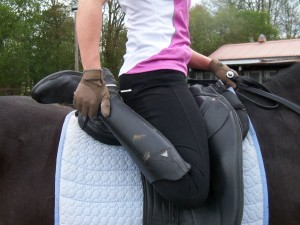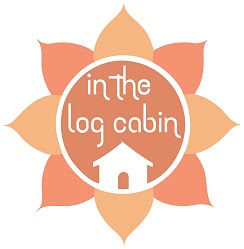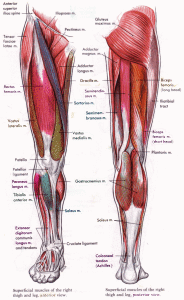In the second part of the Pilates and horse riding series, we take a look at the hip flexors and hamstrings.
As a horse rider it is important to be able to maintain good balance whilst the horse moves underneath us. This requires good core strength to enable us to constantly rebalance and influence the horse as we ride. We have all heard the expression of letting our legs hang like damp cloths around the horse’s sides. This means the legs should be hanging down ready to use, but not gripping.
What are the Hip Flexors?
The hip flexors are a complex group of muscles which enable us to flex the hip and they connect our legs to our pelvis. They are extremely important muscles and are used when we bring the thigh toward the body, as in lifting the knee to put a foot in the stirrup, or when the body comes toward the thigh, for example when reaching down from the saddle to tighten the girth. When we spend a lot of time in a seated position (in or out of the saddle), the hip flexors are unable to lengthen and become stuck in a shortened, tight position.
Do you ever suffer with lower back pain or painful knees? Part of the iliopsoas (one of the muscles making up the hip flexors) is
attached to the lower spine and the other part is attached to the inside of the pelvic bones. These muscles combine and attach on the inside of the thigh. This muscle gets shortened when in the typical riding position and it is this shortening which causes lower back pain, painful knees and tight hips.
Achieving long and relaxed thighs is not impossible but it does require both stretch in the hip flexors and strength in the hamstrings.
What are the Hamstrings?
The hamstrings are a group of three muscles. They work together to enable us to flex the knee bringing the heel toward the buttocks and extend the hip where we move the leg behind us. The hamstrings begin at our seat bones and attach to the upper parts of the lower leg bones.
From standing, can you bend forwards keeping the legs straight (but not locked) and touch your toes? No? Tight hamstrings could be your problem. Hamstrings are often tight and tight hamstrings are usually weak. Tight hamstrings are commonly caused by being in a seated position for a prolonged period. When the hamstrings are tight it causes the pelvis to tuck under, flattening the lower back. When the pelvis is tucked it leads to a rounded upper body. This will affect your shoulders as well and you will have difficulty keeping the shoulders square over the hips.
Exercise for Stretching the Hip Flexors
Lunging Hip Flexor Stretch
Begin by coming on to all fours. Ensure the knees are under the hips and hands under the shoulders. Step one foot in between the hands. Slide the other leg behind you. Maintain a neutral spine and engage the core to help keep the pelvis stable. Allow the body to bend to rest the hands on the floor. Ensure that the pelvis is level and that both hips are facing the floor. Make sure that the knee does not come in front of the toes of the bent leg. Engage the glutes by squeezing the buttocks. You will feel the stretch through the front of the thigh of the straightened leg. Hold the stretch for 30 seconds and repeat on the other side. Repeat three times on each side.
Exercise for Strengthening the Hamstrings
Hip Roll
Begin by lying down with the knees bent and feet hip distance apart. The back should be in a neutral position and you should start to breath laterally (see Part 1 for instructions on lateral breathing). Inhale and pick the hips up being careful not to let the feet move. Have the feeling of pulling the thighs closer together. Exhale and then inhale as you try to roll the spine back on to the mat. Try to feel each vertebra as you roll down. Keep the weight to the front of the feet and roll down to neutral. To increase the work on the hamstrings, you can have your feet on a stability ball or foam roller.

Stretching the legs while in the saddle is very beneficial – please excuse my dirty boots!
Riding without stirrups is also a great way of lengthening the leg muscles, you may find you need to drop your stirrups a hole or two once you take them back! A good stretch for your legs whilst in the saddle is to take the feet out of the stirrups and then take hold of your ankle, drawing it towards your buttock. Be careful to ensure you do not alter your pelvis and keep an upright posture.
Strengthening and lengthening the legs is an important aspect of horse riding. However when the rider does not have sufficient core strength to maintain balance, they will often start to grip with the legs and thighs. Pilates will address all of these aspects and help you become a better rider. Part three of this series will focus on the all-important core strength and stability.
If you missed part 1 of this series, take a look at Pilates for Horse Riders – the Importance of Breath


To whom this may concern,
I would like to Thankyou for providing this information. I must highlight that I am not a horse rider, but in fact; ride a road legal supersports motorcycle. So to be seated in such a riding position, I think it is fair to say that I can relate.
The reason for visiting your webpage is that I have developed a constant muscle pain on the inside of my thigh closest to my crotch. I have corresponded to the illustration provided above and from what I can suggest, my pain is either evolving from the Pectineus or the Adductor Longus muscle.
I have developed this shape pain, by the constant routine to changing gear on my motorcycle. To change gear, the rider must use his foot to knock the gear into place is a robust manner, it doesn’t always have to done this way, but the greater the speed, the greater the force is to change gear successfully. It is this repeated pattern of shifting the whole weight of my body on one foot to make a successful gear change that has caused this constant, never ending pain. The make the reader aware, this has not happened overnight, but it has taken just over a year to come to light as my motorcycle is my only form of transport.
From your excellent description and explanation , I can fully relate and it would like to mention that I will be trying out those stretches to see if the pain eases..
In the meantime, would it be possible if you could suggest any other ideas, that may help?
Your kindness and help will be very much appreciated.
Kind Regards,
William.
Hi William,
Thank you for your comment and I’m sorry to hear about your problem. There are definitely similarities between biking and horse riding so I am sure you can relate to the points made!
In regards to your injury, the Pectineus and Adductor Longus muscles (as well as some others) are the main hip adductor muscles. These muscles pull the thigh inward and bend the hip as well. These muscles come into play during the gear change motion you describe. Stretching out these muscles should help and there are a couple of simple stretches you can do as follows (it may be wise to check with a physio or other practitioner first before commencing stretches):
1. Sit on the floor with the knees bent and feet together. Bring the soles of your feet together and allow the knees to drop out to the side. Sit up straight and lean forwards from your hips allowing the knees to come closer to the floor. Gradually increase the stretch by bringing the heels of the feet closer to the groin and your chest closer to your feet. To begin with it may be extremely tight but don’t worry as over time it will release. Avoid bouncing the knees, keep the movement small and controlled.
2. Stand with your legs as far apart as you can. Bend your left knee over your toes and lower the right leg to increase the stretch. Then do the same on the other side.
I hope those stretches help and let me know how you get on!
Best wishes,
Clare